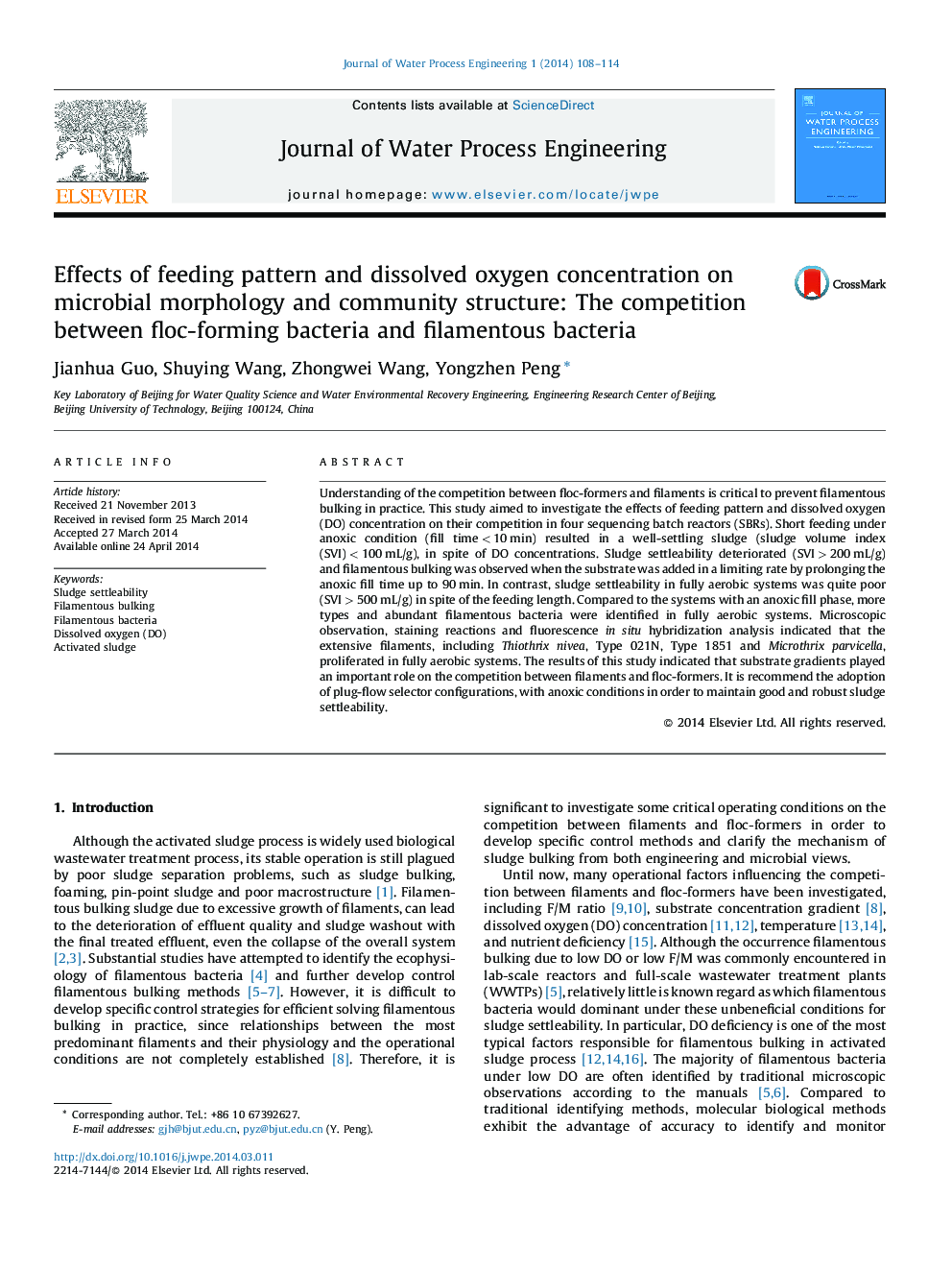| کد مقاله | کد نشریه | سال انتشار | مقاله انگلیسی | نسخه تمام متن |
|---|---|---|---|---|
| 232591 | 465293 | 2014 | 7 صفحه PDF | دانلود رایگان |
Understanding of the competition between floc-formers and filaments is critical to prevent filamentous bulking in practice. This study aimed to investigate the effects of feeding pattern and dissolved oxygen (DO) concentration on their competition in four sequencing batch reactors (SBRs). Short feeding under anoxic condition (fill time < 10 min) resulted in a well-settling sludge (sludge volume index (SVI) < 100 mL/g), in spite of DO concentrations. Sludge settleability deteriorated (SVI > 200 mL/g) and filamentous bulking was observed when the substrate was added in a limiting rate by prolonging the anoxic fill time up to 90 min. In contrast, sludge settleability in fully aerobic systems was quite poor (SVI > 500 mL/g) in spite of the feeding length. Compared to the systems with an anoxic fill phase, more types and abundant filamentous bacteria were identified in fully aerobic systems. Microscopic observation, staining reactions and fluorescence in situ hybridization analysis indicated that the extensive filaments, including Thiothrix nivea, Type 021N, Type 1851 and Microthrix parvicella, proliferated in fully aerobic systems. The results of this study indicated that substrate gradients played an important role on the competition between filaments and floc-formers. It is recommend the adoption of plug-flow selector configurations, with anoxic conditions in order to maintain good and robust sludge settleability.
Journal: Journal of Water Process Engineering - Volume 1, April 2014, Pages 108–114
